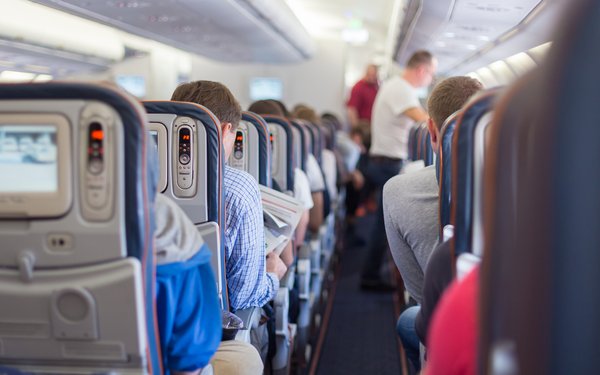FAA Must Give 'The Incredible Shrinking Airline Seat' Another Look
- by Thom Forbes @tforbes, August 1, 2017

With one judge writing “this is the case of the incredible shrinking airline seat” in a 23-page decision, a federal court has directed the Federal Aviation Administration to a take another look at a petition filed by a consumer group claiming that airlines are creating safety issues by cramming more passengers into finite space by decreasing space size at the same time that girths are expanding.
Judge Patricia Millett of the three-judge U.S. Court of Appeals for the D.C. Circuit also said “the FAA offered a ‘vaporous record’ of evacuation tests with ‘off-point studies and undisclosed tests using unknown parameters’ in justifying not regulating seat size. The court ordered FAA to provide a ‘properly reasoned’ explanation of its evacuation standards,” reports Jonah Engel Bromwich for the New York Times.
advertisement
advertisement
Flyers Rights filed the petition in 2015. It “said the distance between seats from row to row had decreased to an average of 31 inches from an average of 35 inches and that the average seat width had narrowed by about an inch and a half since the early 2000s,” Bromwich writes. “ … Citing data from the Centers for Disease Control and Prevention, it said the average adult man was 191 pounds, a gain of 25 pounds from 1960 to 2002, and the average adult woman had gained 24 pounds, to 164 pounds, in that time.”
And despite the growing popularity of kale and diminishing appetite for sugar-laden drinks and processed foods, we suspect those measurements have increased even more over the past 15 years.
“The appeals panel acknowledged concerns from the consumer group, including one passenger who described climbing over seats to get out of a row and another who said a plane couldn’t have been evacuated in an emergency in less than three minutes,” reports Bart Jansen for USA Today. “Paul Hudson, president of Flyers Rights, called the decision ‘a very rare reprimand,’” he writes.
“The airline industry has long opposed the regulation of seat size. Its main U.S. trade group, Airlines for America, declined to comment on the ruling,” according to an AP story on CNBC.com. “Airlines have steadily reduced the space between rows to squeeze in extra seats and make more money. On discount carrier Spirit Airlines, the distance between the headrest of one seat and that of the seat in front of it — a distance called ‘pitch’ — is 28 inches (71 centimeters), which, after accounting for the seat itself, leaves little legroom for the average passenger.”
And the spirit is catching.
“CNN reported earlier this year that American Airlines was preparing to retrofit its fleet of Boeing 737 Max jets with less room for economy fliers, for example,” points out Avi Selk in the Washington Post.
“United Airlines was reportedly thinking about doing likewise, even as chair-related horror stories scandalize the industry — like the woman who said her arm and leg went numb after she was forced to squeeze her toddler into the seat she already occupied; or the man dragged from an airplane when he refused to yield his few inches of fabric,” Selk continues.
Then there’s Ann Coulter, who flew into a Twitter rage over United moving her from a pre-booked aisle seat with extra legroom to a window seat, purportedly without an explanation, a few weeks ago.
“The FAA wouldn’t comment on the court ruling other than to say ‘the FAA does consider seat pitch in testing and assessing the safe evacuation of commercial, passenger aircraft. We are studying the ruling carefully and any potential actions we may take to address the Court’s findings,’” writes Barbara Peterson for Condé Nast Traveler.
“A source at the agency, who spoke on background, said that the FAA’s mandate is strictly to regulate safety and that such issues as comfort, and whether seat size is keeping up with the size of the average passenger, would more rightly fall within the scope of the Department of Transportation, which deals with airline consumer issues,” Peterson continues.
“The court ruling doesn’t necessarily mean the FAA will move to require greater seat pitch; the agency could reject the petition again and simply provide better justification to support its ruling. Nonetheless, the decision was described as ‘groundbreaking’ by aviation attorney Arthur Alan Wolk,” reports Robert Curley for Business Traveller.
And who knows, maybe a few of the “reputationally challenged” airlines out there might start positioning space and legroom as something other than a premium offering.



The DOJ, DOT, and FAA have allowed the airline industry to become an oligopoly (with virtual monopolies in hub markets) through consolidation and informal collusion. The industry will continue to victimize the public in various ways until some degree of regulation is introduced.
Regulation, at least for the sake of safety, needs to be done now, and not at the bureacracy's usual snail pace.